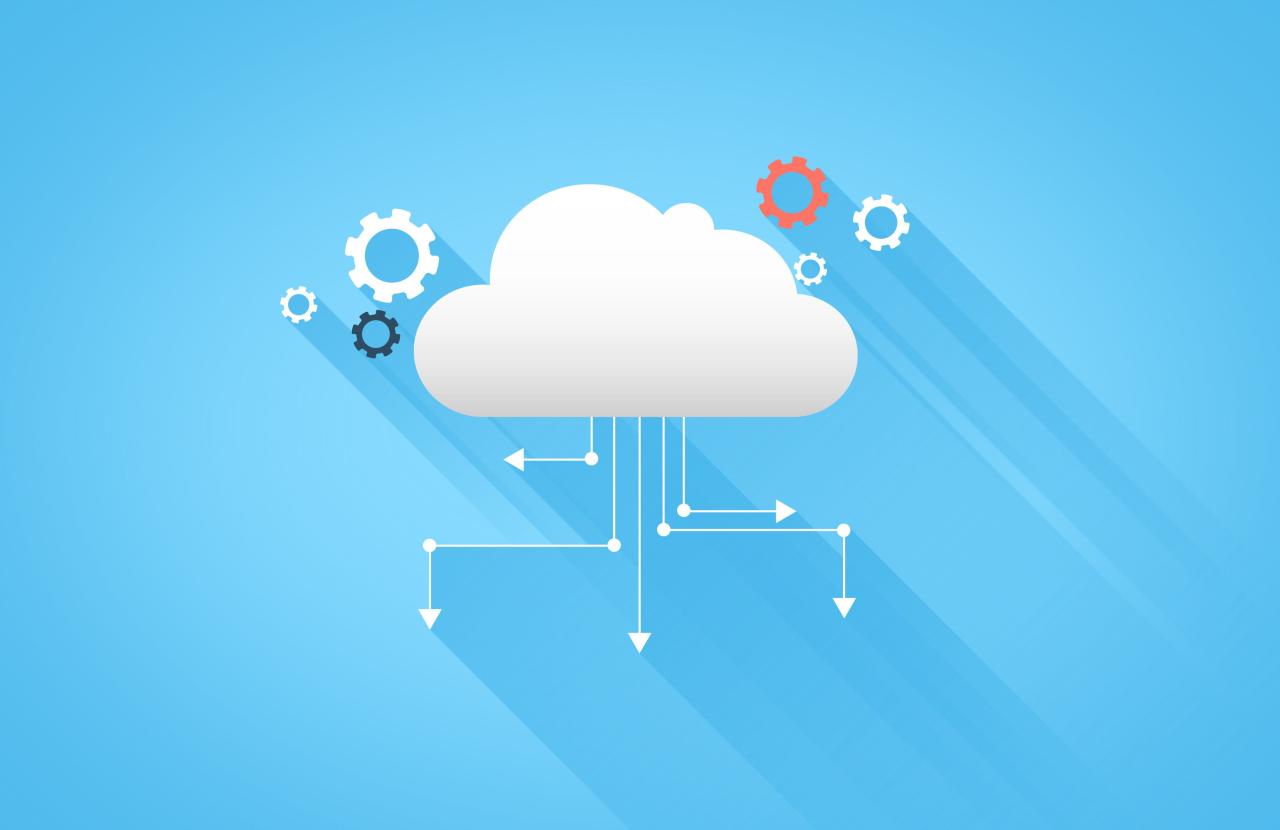The journey to the cloud has been a defining characteristic of modern enterprise IT. What began as a bold experiment has evolved into a strategic imperative for businesses seeking agility, scalability, and cost optimization. Yet, this migration isn’t always a straightforward lift-and-shift operation. One of the most significant, often underestimated, forces at play is data gravity. Coined by Dave McCrory, data gravity describes the phenomenon where data, much like physical objects, attracts applications and services to itself. The larger and more critical a dataset becomes, the stronger its ‘gravitational pull,’ making it increasingly challenging and expensive to move. Understanding and strategically addressing data gravity is paramount for any organization navigating its cloud adoption strategy, directly impacting architectural choices, migration timelines, and overall project success.
Concept of Data Gravity
To truly grasp its impact, let’s delve deeper into what data gravity entails and how it influences IT landscapes.
A. The Genesis of Data Gravity
The concept of data gravity originated from the observation that as data accumulates in a particular location or platform, it begins to attract other data, applications, and services towards it. Think of it like a celestial body: the more mass it gathers, the stronger its gravitational field. In the digital realm, ‘mass’ refers to the sheer volume of data, its velocity (how frequently it’s accessed or changed), its variety (different types of data), and its value (its business criticality). These factors collectively determine the strength of a dataset’s gravitational pull.
- Volume: Simply put, larger datasets exert a stronger pull. Moving terabytes or petabytes of data across networks, especially between different cloud providers or from on-premises to the cloud, is a time-consuming and expensive endeavor. This sheer volume creates inertia.
- Velocity: Data that is constantly accessed, updated, or processed (high velocity) is harder to move without disrupting ongoing operations. Real-time transaction systems or constantly updated analytical databases exemplify this. The continuous flow means there’s never a ‘quiet’ moment for migration.
- Variety: Diverse data types and formats (structured, unstructured, semi-structured) can complicate migration. Each type might require different tools, transformation processes, or storage solutions, adding complexity to the move.
- Value/Criticality: Mission-critical data, the backbone of business operations, carries immense risk if disrupted. The perceived value and the potential cost of downtime or data loss amplify data gravity, as organizations become highly risk-averse when dealing with their most important assets.
B. The Interplay with Applications and Services
Data gravity isn’t just about the data itself; it’s about the ecosystem that forms around it. Applications that frequently interact with a large dataset tend to be deployed geographically or logically close to that data to minimize latency and optimize performance. Similarly, analytical tools, reporting dashboards, and specialized processing engines are often built around or moved towards the data they need to consume.
This creates a self-reinforcing cycle: more data attracts more applications, which generate more data, further increasing the gravitational pull. This ‘data center as a black hole’ analogy, where data creates its own gravitational field, perfectly illustrates why traditional, centralized data centers became so entrenched and why migrating away from them can be incredibly challenging. The problem isn’t just moving the data; it’s disentangling the intricate web of dependencies that has formed around it.
Data Gravity’s Impact on Cloud Adoption Strategies
The force of data gravity profoundly influences every stage of an organization’s cloud adoption journey, from initial planning to ongoing operations. Ignoring it can lead to unexpected costs, performance issues, and failed migrations.
A. Migration Planning and Execution Challenges
The most immediate impact of data gravity is felt during the cloud migration phase.
- Network Bandwidth and Latency: Moving massive datasets across the internet or dedicated network links can consume enormous bandwidth and take an unacceptably long time. For multi-petabyte datasets, a digital transfer might be impractical, necessitating physical shipment of hard drives (known as ‘sneakernet’). Even after the initial transfer, latency between applications and data across different locations can degrade performance significantly.
- Cost Implications: Large data transfers often incur egress (data out) and ingress (data in) charges, especially when moving between different cloud providers or from on-premises to the cloud. These ‘data transfer costs’ can quickly accumulate, making what seemed like a cost-saving cloud migration turn into an expensive endeavor. Furthermore, the cost of specialized migration tools or professional services also adds to the expense.
- Downtime and Business Disruption: Migrating critical, high-velocity data often requires a period of downtime, impacting business operations. Minimizing this downtime for large datasets is a complex engineering challenge, often involving sophisticated data synchronization techniques and cutover strategies. The business impact of even planned downtime must be carefully weighed.
- Data Governance and Compliance: Data located on-premises might be subject to specific regulatory compliance or data governance policies (e.g., data residency requirements) that complicate its direct transfer to a public cloud. The legal and compliance implications of moving sensitive data across geographical boundaries or into shared cloud environments must be thoroughly vetted.
B. Architectural Decisions and Cloud Native Development
Data gravity isn’t just a migration headache; it also shapes how applications are designed and refactored for the cloud.
- Monolithic Application Decomposition: Large, tightly coupled databases in monolithic applications exert immense data gravity. Decomposing such monoliths into microservices often requires also breaking down the central database, which is one of the most challenging aspects of re-architecting for the cloud. The inability to easily decompose the data layer can force compromises in adopting cloud-native patterns.
- Data Locality for Performance: For latency-sensitive applications (e.g., real-time analytics, gaming, financial trading), keeping data and its consuming applications physically close is paramount. Data gravity dictates that these applications will tend to reside in the same cloud region or availability zone as their primary datasets, limiting architectural flexibility for global deployments.
- Distributed Data Patterns: To counteract data gravity, cloud architects often employ distributed data patterns. This includes using geographically distributed databases, data replication across regions, or edge computing to bring processing closer to data sources. Each of these patterns adds complexity and cost, but can mitigate the pull of large datasets.
- Hybrid and Multi-Cloud Strategies: Data gravity can be a significant driver for adopting hybrid cloud (on-premises and public cloud) or multi-cloud (using multiple public clouds) strategies. Organizations might keep highly sensitive or extremely large datasets on-premises or in a specific cloud provider to minimize movement, while deploying less sensitive or new applications in other cloud environments. This leads to a complex, distributed data landscape.
C. Operational Implications and Cloud Optimization
The gravitational pull of data continues to impact operations long after the initial migration.
- Ongoing Data Synchronization: For hybrid environments, continuous data synchronization between on-premises and cloud (or between different cloud regions/providers) is often necessary. This incurs ongoing network costs and requires robust data replication and conflict resolution mechanisms, adding operational overhead.
- Backup and Disaster Recovery: Large datasets require equally large and robust backup and disaster recovery solutions. The process of backing up, moving backups off-site (or to another cloud region), and restoring them is heavily influenced by data volume and velocity, impacting Recovery Time Objectives (RTO) and Recovery Point Objectives (RPO).
- Analytics and AI Workloads: Big data analytics, machine learning, and artificial intelligence workloads are inherently data-intensive. Their effectiveness and performance are directly tied to how easily and quickly they can access relevant datasets. Data gravity means these workloads will gravitate towards where the largest, most valuable datasets reside, often influencing the choice of cloud provider or even necessitating specialized data lakes/warehouses within a specific cloud.
- Cost Management: Unexpected data transfer costs, especially egress fees, can quickly erode the cost benefits of cloud adoption. Organizations must carefully monitor data flow patterns and strategically place data to minimize these charges, a direct consequence of data gravity.
Mitigating the Force: Strategies to Overcome Data Gravity
While data gravity is a powerful force, it’s not insurmountable. Organizations can employ several strategies to lessen its impact and facilitate a smoother cloud journey.
A. Strategic Data Classification and Tiering
Understanding the nature of your data is the first step.
- Identify Cold, Warm, and Hot Data: Classify data based on its access frequency and criticality.
- Cold Data: Rarely accessed, often historical archives. This data has low velocity and can be moved with less urgency.
- Warm Data: Accessed occasionally, perhaps for monthly reports or specific queries.
- Hot Data: Frequently accessed, mission-critical, real-time data. This data exhibits strong gravity. Strategically migrating colder data first can build experience and reduce initial gravitational pull.
- Implement Data Tiering: Use different storage tiers within the cloud based on access patterns and cost. Hot data resides in high-performance, expensive storage, while cold data moves to archival, low-cost storage. This optimization reduces the ‘active’ mass of data exerting strong gravity.
B. Intelligent Data Migration Techniques
Choosing the right migration approach is crucial.
- Phased Migration: Instead of a ‘big bang’ migration, move data incrementally. This can involve setting up hybrid connectivity (e.g., AWS Direct Connect, Azure ExpressRoute) and synchronizing data over time, performing a final cutover during a planned maintenance window.
- Data Replication and Synchronization: Utilize database replication services or specialized data synchronization tools (e.g., AWS Database Migration Service, Azure Data Sync) to minimize downtime for active datasets. This creates a replica in the cloud, allowing for a quicker flip.
- Physical Data Transfer: For extremely large datasets (many petabytes) where network transfer is cost-prohibitive or too slow, consider physical data transfer services offered by cloud providers (e.g., AWS Snowball, Azure Data Box). Data is loaded onto secure appliances and shipped to the cloud data center.
- Compress and Deduplicate Data: Before transfer, apply data compression and deduplication techniques to reduce the actual volume of data that needs to be moved, thereby lessening the bandwidth and time requirements.
C. Re-Architecting Applications for the Cloud
The most effective long-term strategy often involves changing how applications interact with data.
- Microservices and Data Decomposition: Break down monolithic applications into smaller microservices, and critically, decompose their associated monolithic databases. This often means each microservice owns its data, reducing the size of individual datasets and their gravitational pull. This enables independent scaling and deployment of data stores.
- Leverage Cloud-Native Databases: Utilize cloud-native managed database services (e.g., Amazon DynamoDB, Azure Cosmos DB, Google Cloud Spanner) that are inherently designed for scalability, high availability, and global distribution. These services can often manage data locality and replication automatically.
- Event-Driven Architectures: Adopt event-driven architectures where data changes trigger events, and services react to these events. This pattern can reduce direct, synchronous data access, making services less tightly coupled to a single large data store. Data flows through streams rather than being pulled from a central point.
- Content Delivery Networks (CDNs) and Edge Computing: For static content or data that needs to be close to users globally, utilize CDNs. For dynamic content or low-latency processing, explore edge computing solutions that bring compute and data closer to the source, reducing the effects of data gravity on distributed user bases.
D. Strategic Cloud Placement and Multi-Cloud Considerations
Where data resides matters.
- Regional Placement: Deploy applications and their primary datasets in the same cloud region or availability zone to minimize latency and inter-zone data transfer costs.
- Hybrid Cloud Architectures: For organizations with extremely large, on-premises datasets that are difficult or impossible to move (e.g., due to regulatory constraints or legacy dependencies), a hybrid cloud approach allows maintaining core data on-premises while leveraging public cloud for new applications or burst capacity. This acknowledges and works with data gravity rather than fighting it.
- Data Hubs in the Cloud: Consider establishing a ‘data hub’ within a single cloud provider where large, shared datasets are consolidated. Other applications or analytical workloads then gravitate towards this hub within the cloud environment, minimizing cross-cloud data movement and associated egress costs.
The Future of Data Gravity in the Cloud Era
As cloud technologies mature and data volumes continue their exponential growth, the concept of data gravity will remain highly relevant, constantly influencing architectural and strategic decisions.
A. Edge Computing and Distributed Data Topologies
The rise of edge computing is a direct response to data gravity. By bringing compute and data processing closer to the source of data generation (e.g., IoT devices, retail stores, manufacturing plants), it reduces the need to constantly move massive amounts of raw data to a central cloud. This creates highly distributed data topologies, where pockets of data gravity exist at the edge, interconnected with core cloud data lakes. This ‘distributed gravity’ will be a key trend.
B. Data Mesh and Decentralized Data Ownership
The data mesh paradigm advocates for decentralized data ownership, treating data as a product managed by domain-oriented teams. This approach inherently addresses data gravity by distributing responsibility for data. Each domain team manages its data products, often storing them in the location most suitable for their consumers. While still needing to manage inter-domain data flow, it shifts from a central data lake’s gravitational pull to a more federated model.
C. Advanced Data Transfer and Management Services
Cloud providers will continue to innovate with increasingly sophisticated services for data transfer, replication, and synchronization. Expect more intelligent data lifecycle management tools that automatically tier data, optimize placement, and minimize costs based on access patterns and data gravity analysis. AI and machine learning will play a larger role in predicting optimal data placement and movement strategies.
D. Serverless Databases and Adaptive Scaling
The proliferation of serverless databases (e.g., Aurora Serverless, Azure Cosmos DB) will further mitigate data gravity for transactional workloads. These databases dynamically scale their compute and storage, allowing data to grow without manual provisioning. Their inherent cloud-native design often simplifies data distribution and replication across regions, making data more fluid and less ‘gravitationally bound’ to fixed infrastructure.
E. Focus on Data Fabric and Semantic Layers
To manage the complexity of distributed data across multiple clouds, on-premises systems, and edge locations, the concept of a data fabric will become more prominent. A data fabric aims to provide a unified, intelligent layer over disparate data sources, allowing applications and users to access data seamlessly regardless of its physical location. This semantic layer helps to abstract away the underlying data gravity, making data appear more fluid and accessible across the enterprise.
Conclusion
Data gravity is a pervasive and often underestimated force in the realm of cloud computing. It dictates that as data grows in volume, velocity, variety, and value, it exerts a stronger pull, attracting applications and services to its location and making it increasingly difficult and costly to move. Organizations embarking on or continuing their cloud adoption journey must not ignore this fundamental principle.
By strategically classifying and tiering data, employing intelligent migration techniques, re-architecting applications for cloud-native patterns, and making informed decisions about data placement in hybrid or multi-cloud environments, businesses can effectively mitigate the adverse effects of data gravity. The future will see continued innovation in edge computing, data mesh approaches, and advanced data management services specifically designed to make data more fluid and less constrained by its gravitational pull. Understanding and proactively addressing data gravity is not just a technical consideration; it’s a strategic imperative that directly impacts the efficiency, cost-effectiveness, and ultimate success of any cloud transformation initiative, ensuring that your digital assets empower your business rather than tether it down.















